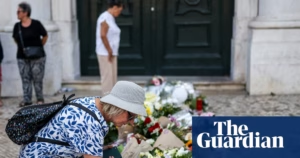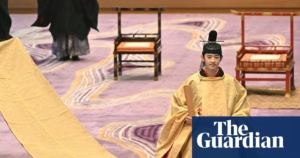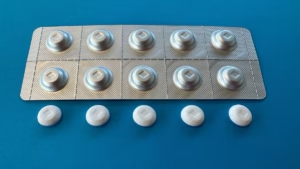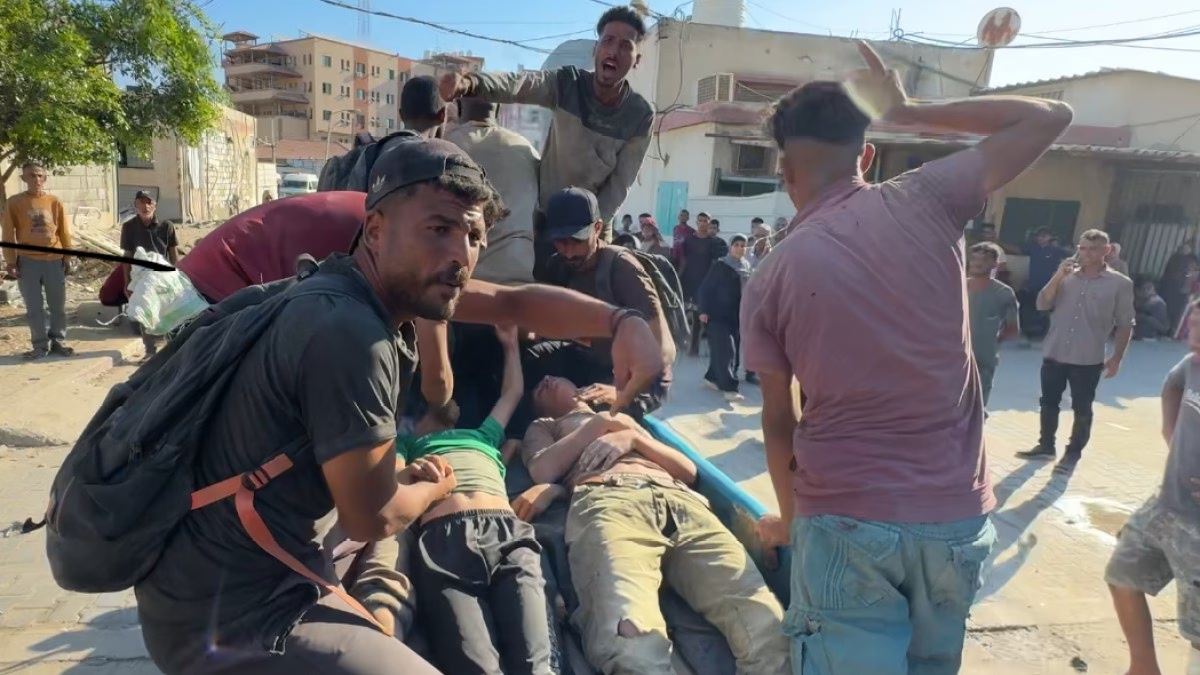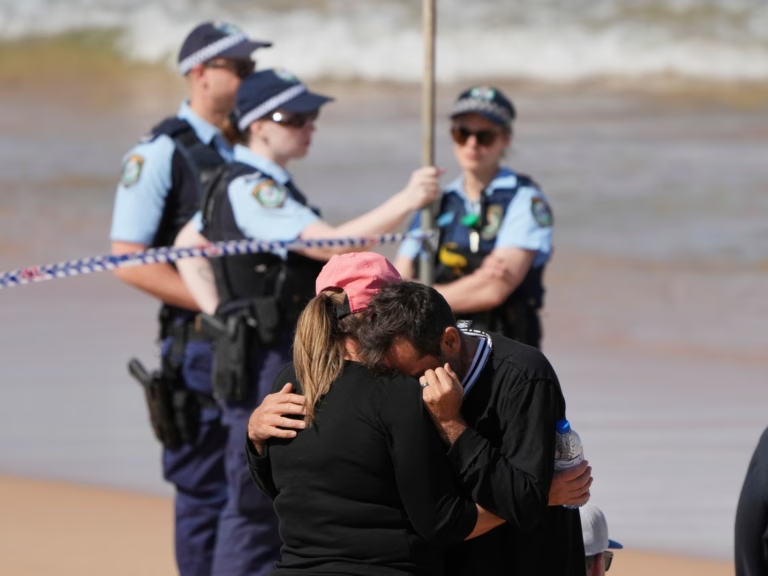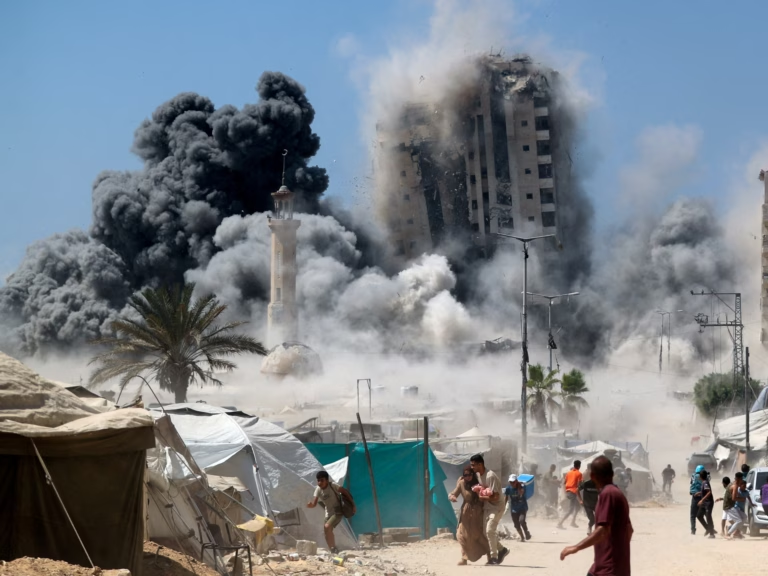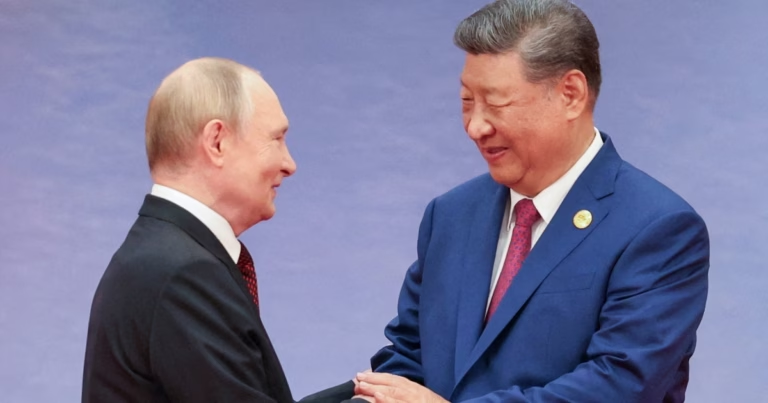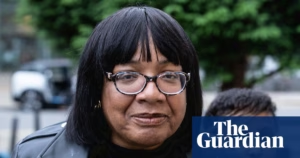On Wednesday morning, Hani left his tent in the al-Mawasi area of southern Gaza’s Khan Younis, where he and his seven siblings have been displaced from Rafah, heading to a food distribution point run by the much-criticized, United States-backed GHF.
Hani stated to Al Jazeera, “We left at dawn and stood among the thousands gathered. About 5am [02:00 GMT], they [US staff and Israeli army] signaled to open the gate, and people rushed forward.”
“The gate was open, but people were packed into a very narrow corridor leading to it – only about seven meters wide,” he said, struggling to catch his breath after arriving at Nasser Hospital barely conscious.
“I got in with the crowd with difficulty. Suddenly, American guards started spraying pepper spray and firing gas bombs, and people began stampeding through the corridor,” he added.

‘I collapsed. They trampled my face.’
Scared for his life and unable to move, Hani collapsed, his face and side trampled. No one could pull him out. But Hani considers himself lucky to have survived.
He was hurriedly taken to Nasser Hospital in Khan Younis on a tuk-tuk and placed beside the bodies of others who had died, some due to suffocation and others from gunshot wounds.
“I was unconscious and could not see or hear. I drifted in and out. They put me beside the dead. I thought I was with them,” Hani said.
Nearly two dozen Palestinians, 15 of whom died from suffocation, were killed early on Wednesday while trying to collect food aid. The incident happened near a gate operated by GHF in western Khan Younis, and dozens more were reported injured, with some still in intensive care.
Hani is the oldest of eight siblings who live with their uncle – their parents are currently in Jordan, seeking medical treatment, just before the outbreak of war.
“I feel like I carry a huge burden. We lack support from our parents and endure the pressures of displacement and war,” Hani said.
Hani says that despite the dangers associated with queuing for aid from GHF, the dire need for food forces him to keep going every day.
“We have no other choice. I do not have the money to buy the expensive goods in the market. My only option is to take a chance with the aid distributions,” Hani said.
Each visit is a close call with death. With gunfire, tanks, drones, and attacks, distribution of aid is hazardous, and civilians are exhausted.
“We’re shot at like animals”

Mohammed Abedin, 24, is now recovering in the hospital with a gunshot wound in his leg after going to the same aid centre in Khan Younis early Wednesday.
For the first time, Abedin decided to leave after feeling endangered by the crowd’s frenzy.
The young student, studying accountancy, went to the site at around 3am (00:00 GMT), only to find the situation different from before.
“Before, we used to enter from several points, with a broad entry path. This time, individuals were funnelled through one slender, metal-barricaded corridor,” he says.
When the gates opened, the crowd rushed forward, and people began trampled underfoot.
Abedin described a harrowing scene of people crushed against metal barriers, gasping for help, and pepper spray and gas bombs fired by American guards and drones above.
“I was standing close to my cousin when we decided not to join due to the overwhelming crowd. I went back, but just as I believed it was a good decision, a drone shot me in the leg. My cousin was also injured,” he said.
“There is random gunfire from drones, tanks, or soldiers in the area. This time, I was unfortunate. But I am thankful to have made it,” he said. Currently, he awaits surgery to remove the bullet from his leg at Nasser Hospital.
Abedin reflects on the dire situation Palestinians face, starving and at risk of death, forced to gamble with their lives for food. He supports his family of nine displaced from Rafah, now staying in al-Mawasi.
“Every day, we dream of eating bread. I go for aid nearly daily, mostly returning empty-handed. But the days I bring back just a few kilos of flour are a celebration for my family,” he said.
Flour is Abedin’s priority, especially with Gaza in siege for four months, borders closed, and humanitarian and commercial goods blocked by Israel.
“Bread is what drives me to risk death. There’s no alternative,” he said, “Has the world failed to ensure a safe method for the delivery of aid?”
In late May 2025, GHF initiated its aid distribution in Gaza, amid an Israeli-imposed near-total blockade, still in effect and preventing the entry of humanitarian supplies.
According to the United Nations, at least 798 Palestinians have been killed since then while attempting to reach or receive aid from GHF distribution points.
There has been widespread criticism from UN agencies and rights organizations, arguing the operation is politicized and endangers ordinary citizens. The UN states that GHF’s operations violate humanitarian neutrality and are inherently unsafe, highlighted by the hundreds of deaths at their sites.
“Either we return with flour, or we don’t return at all”

Ziad Masad Mansour, 43, along with his wife and six kids, has been displaced from central Gaza to al-Mawasi in Khan Younis after their house was destroyed during the war. He is a regular visitor to the aid lines.
“I leave at night and sleep on the sand. We suffer through the dust and humiliation,” Mansour said, who suffered a head wound on Wednesday.
“Sometimes I bring back flour, sometimes a few cans. Other times, I return with nothing. I even help others in exchange for food.”
“Yesterday, there was excessive overcrowding – gas bombs, bullets, and we were tightly packed in the narrow corridor. I was trying to escape when I was shot in the head and lost awareness.”
Mansour is now recovering at Nasser Hospital. “More than 20 people died today – for a bag of flour. What else is there to say?”
